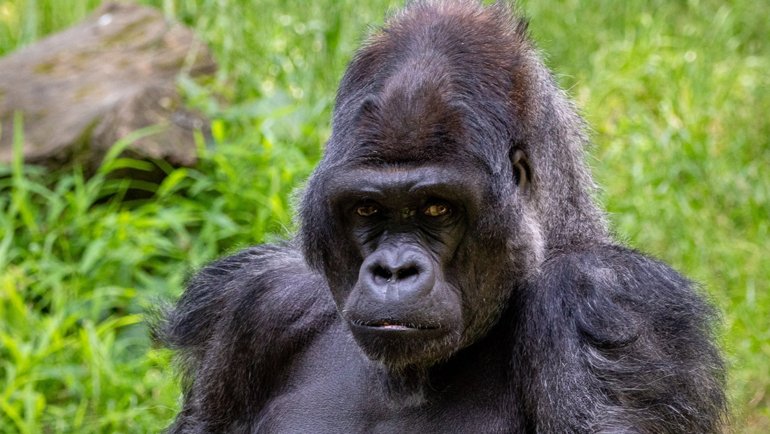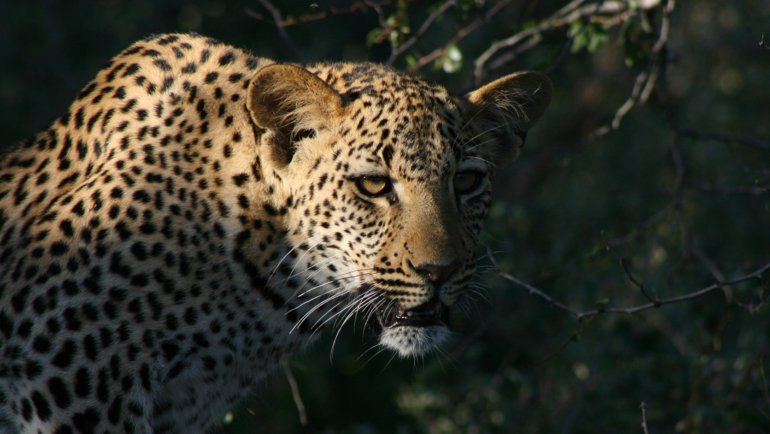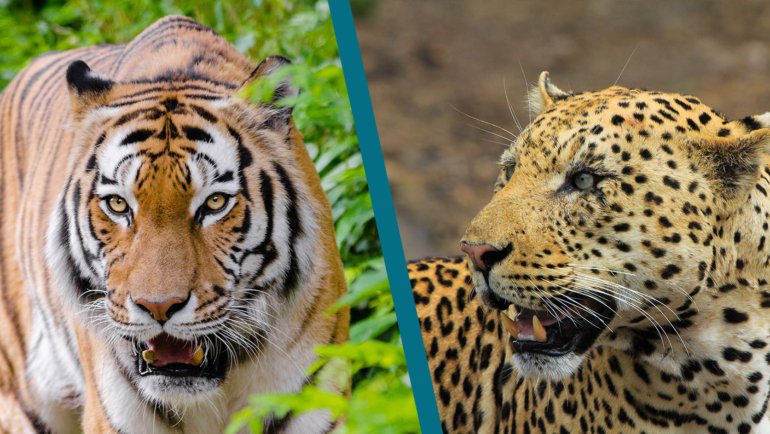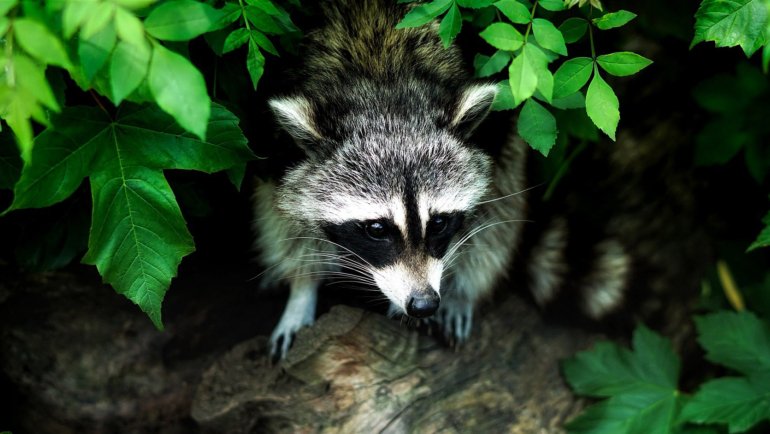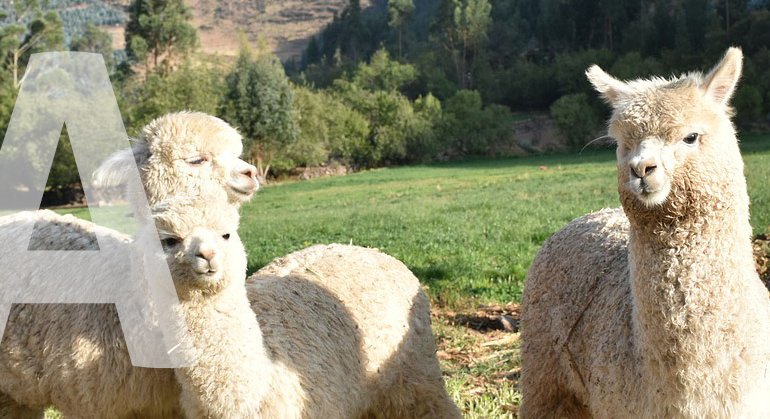Cheetahs and leopards, iconic representatives of the African savannah, often become the subject of confusion due to their external resemblances. Both are embodiments of nature’s perfection: one epitomizes speed, while the other stands as a testament to stealth.
Yet, delve a little deeper, and the distinctions between these magnificent creatures come to light, be it in their physique, their patterns, or their very way of life.
Physical Differences – How to Easily Tell Them Apart?
Size & Build: At a cursory glance, one might find it challenging to differentiate between the two based solely on size. However, leopards tend to have a sturdier and more robust frame, suitable for ambush and strength-based hunting.
Cheetahs, with their slender physique, are designed for speed, making them the fastest land animals. Their lightweight build facilitates rapid acceleration, a crucial asset in chasing down fleet-footed prey.
Fur Pattern: Here lies one of the clearest distinctions. Cheetahs boast a coat adorned with simple, full spots. This design helps them blend into the grassy plains of their preferred habitats.
Leopards, contrastingly, wear a cloak of complexity – their fur pattern is characterized by rosettes, which are spots that form a more circular and rose-like pattern. This intricate design provides them with the camouflage needed for stealthy pursuits in varied terrains, from forests to grasslands.
Facial Features: The face offers another set of clues. Cheetahs possess unique tear marks that run from the inner corners of their eyes down to the sides of their mouth.
These black streaks not only give them a distinct appearance but are also believed to protect against the sun’s glare and help focus better on prey. Leopards lack these tear marks, their faces adorned with smaller rosettes and a more robust and broader head structure.
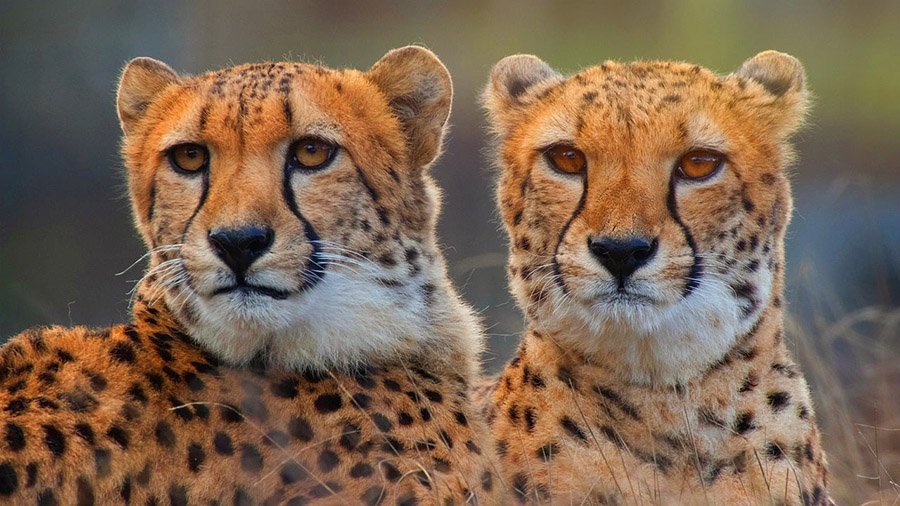
How Did Cheetahs and Leopards Evolve?
Cheetahs, the sprinters of the savannah, have an intriguing evolutionary story. Ancient fossils suggest their lineage dates back to over 5 million years ago. Their ancestors once roamed diverse regions, from North America to Asia and Africa. However, a significant event around 10,000 years ago – possibly a drastic climatic change – led to a genetic bottleneck.
This is why today’s cheetahs exhibit low genetic diversity. Their slender bodies, specialized lungs, and non-retractable claws evolved over millennia, adapting them for one purpose: unmatched speed.
Leopards are among the most adaptable of all big cats, with an evolutionary history that showcases this versatility. Fossil evidence traces the leopard lineage back approximately 6-7 million years. As they spread across Asia and Africa, they occupied diverse habitats, from dense forests to arid deserts.
This adaptability is reflected in their varied coat patterns, with leopards in different regions evolving slightly different rosette patterns to best suit their environment.
Where Do Cheetahs and Leopards Live?
Cheetah: Once widespread across various parts of Africa and Asia, cheetah populations are now primarily confined to certain parts of eastern and southern Africa. Their preferred domain? The vast grasslands and open plains.
These environments allow cheetahs to fully utilize their incredible speed, providing unobstructed paths for their breathtaking chases. Their keen eyesight becomes a critical asset here, enabling them to spot potential prey from great distances.
Leopard: The leopard’s adaptability is legendary. Found in a diverse range of habitats across Africa and parts of Asia, leopards can thrive in forests, mountains, grasslands, and even semi-arid regions.
Their rosette-patterned coat changes subtly depending on their habitat, offering optimal camouflage. For instance, leopards dwelling in dense forests tend to have darker coats with larger rosettes compared to their counterparts in grasslands.
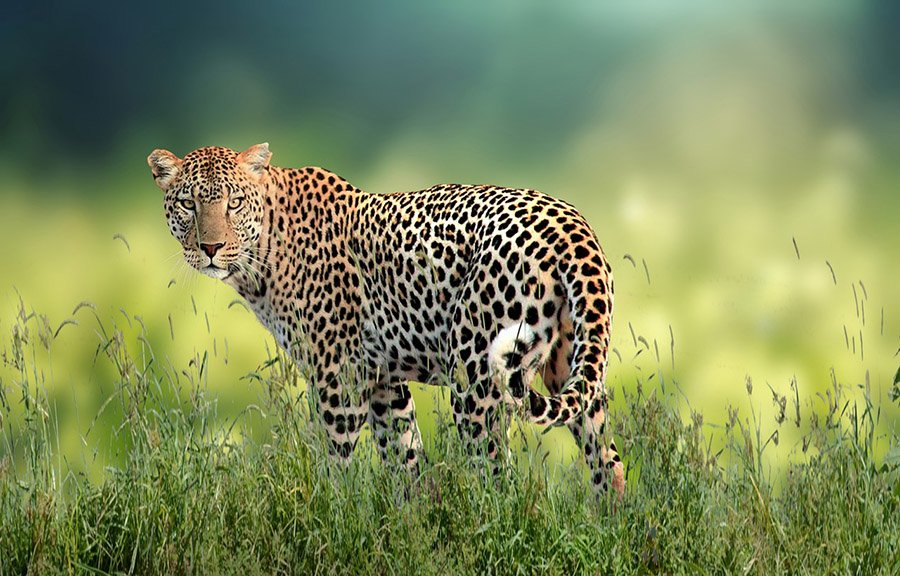
What Are Their Roles in The Ecosystem?
Cheetahs play a pivotal role in maintaining the health and balance of grassland ecosystems. As carnivorous predators, they primarily feed on herbivores, particularly medium-sized ungulates like gazelles.
By regulating these populations, cheetahs ensure that grasslands aren’t overgrazed, allowing the ecosystem to flourish. Moreover, their predatory activities provide scavenging opportunities for other animals, weaving a complex web of interdependence.
Positioned at the top of the food chain, leopards exert control over the populations of various animals, ensuring balance in their habitats. Their diverse diet includes animals from rodents to antelopes, making them integral in controlling the numbers of multiple species.
Furthermore, by hoisting their kills onto trees, leopards play an unintentional role in influencing scavenger behaviors, creating a cascading effect on the ecosystem’s dynamics.
Behavioral Differences
Hunting Techniques
The vast plains that cheetahs call home necessitate a different hunting strategy. Relying on their unparalleled speed, cheetahs typically hunt during the day, using their keen vision to spot prey.
Once a target is identified, they use stealth to get as close as possible before launching into a high-speed chase, often reaching speeds of up to 70 mph. These sprints, however, are short-lived, given the immense energy required.
Leopards, on the other hand, are creatures of stealth and strength. They primarily hunt during twilight or at night, silently stalking their prey and using their powerful build to ambush and overpower them, often with a lethal bite to the neck. They’re known to carry their catch up trees, preventing scavengers like hyenas from stealing their meal.
Climbing Abilities
While cheetahs are more ground-bound due to their specialized anatomy for speed, leopards are adept climbers. Their powerful limbs allow them to haul prey, sometimes heavier than themselves, up into trees. This elevated dining ensures they can eat at their leisure, free from disturbances.
Also read: Can Cheetahs Climb Trees? A Detailed Answer
Social Behavior
Cheetahs, particularly males, can be seen forming small groups known as coalitions. These are often brothers from the same litter, banding together to defend territories and hunt more effectively. Female cheetahs are more solitary, coming together with males only for mating.
Leopards, in stark contrast, are largely solitary creatures, marking and defending vast territories from other leopards.
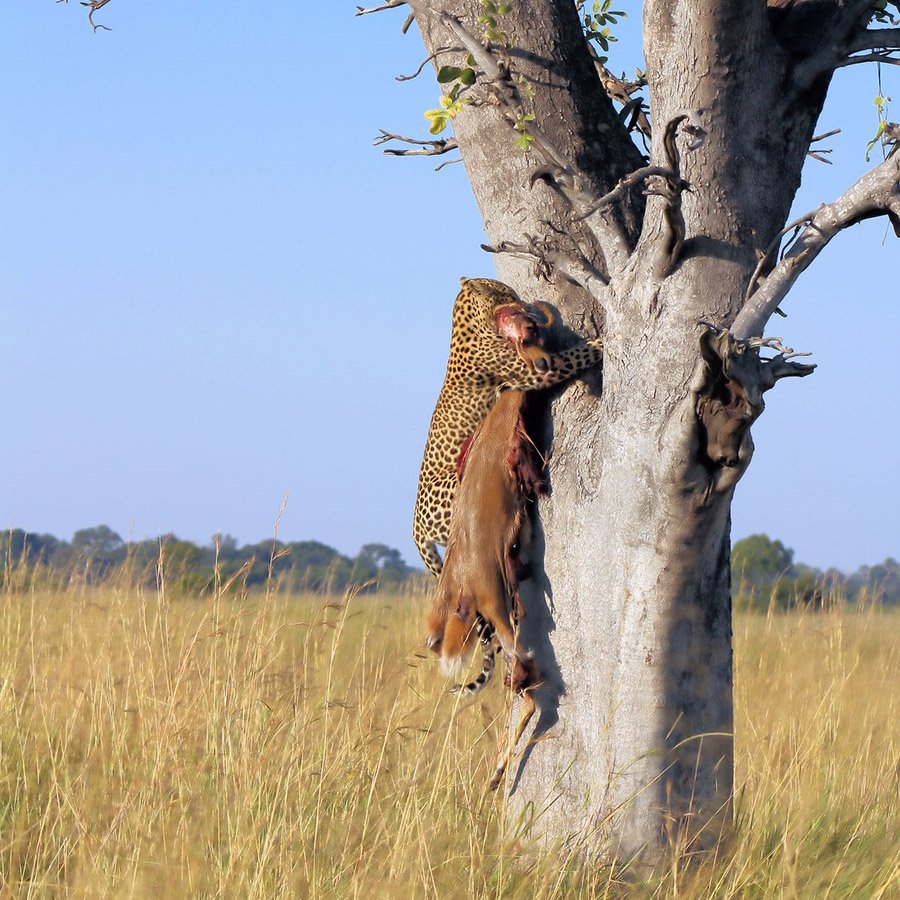
Conservation Efforts & Status
The cheetah, due to habitat loss, human-wildlife conflict, and poaching, is currently listed as vulnerable by the IUCN Red List. Their global population is estimated to be under 7,000 individuals, with a significant decline observed in the last century. Various conservation initiatives aim to stem this tide.
Protected reserves have been established across Africa to provide safe havens. Additionally, breeding programs and community-based conservation efforts work to protect cheetahs and raise awareness of their plight.
Leopards, due to their widespread distribution, have varied conservation statuses across regions. While they’re generally classified as vulnerable, some subspecies, like the Amur leopard, are critically endangered. The primary threats they face include habitat fragmentation, human conflict, and hunting for their beautiful skins.
Conservation initiatives span from anti-poaching patrols to habitat restoration projects. There’s also a significant push for community-based conservation, educating locals about the importance of leopards in the ecosystem and promoting coexistence.
Leopard vs. Cheetah: Who Would Win in a Fight?
While hypothetical confrontations between wild animals are a topic of much speculation and debate, it’s essential to approach them with an understanding of each animal’s strengths and natural behaviors.
- Strength: In terms of raw strength, the leopard holds an edge. Their robust build, complemented by strong jaw muscles, makes them formidable predators capable of taking down larger prey.
- Speed: The cheetah reigns supreme here, being the fastest land animal. However, this speed is an advantage in chases over short distances, not necessarily in direct confrontations.
- Agility: Leopards, with their ability to climb and navigate varied terrains, might hold a slight advantage in agility, especially in forested environments.
- Tactics: A cheetah’s primary tactic is the chase, while the leopard’s is ambush. In a direct confrontation, the leopard’s strength and tactics would likely give it an advantage, although such encounters in the wild are rare.
- Historical & Anecdotal Evidence: There are minimal recorded confrontations between these two species, given their differing habitats and behaviors. However, any such encounters are more about territory and avoidance rather than direct combat.

Final Thoughts
Cheetahs and leopards, while frequently compared, stand as distinct testimonies to nature’s diverse paths to predatory perfection. The cheetah’s streamlined physique, enabling breathtaking sprints, contrasts sharply with the leopard’s stealthy prowess and strength.
Instead of pitting them against each other in hypothetical battles, it’s far more enriching to celebrate their unique adaptations and roles in the intricate web of the ecosystem. As apex predators, both face threats from habitat loss and human interference and understanding them better can only aid in their conservation.
Frequently Asked Questions
What is the primary difference between a cheetah’s spots and a leopard’s rosettes?
Cheetahs have distinct, clear, round spots. Leopards, on the other hand, have rosettes that are larger and resemble a rose-like shape, often with a central spot.
How fast can a cheetah run?
Cheetahs can reach speeds of up to 70 mph (112 km/h) in short bursts covering distances up to 500 m, making them the fastest land animals.
Do leopards climb trees?
Yes, leopards are adept climbers and often store their kills in trees to keep them away from scavengers.
Why do cheetahs have tear marks?
The tear marks on a cheetah’s face help reduce glare from the sun and focus their attention on prey.
Are cheetahs endangered?
Yes, cheetah populations are declining due to habitat loss, poaching, and other threats, and they are currently listed as vulnerable by the IUCN Red List.
How strong is a leopard’s bite?
Leopards have a powerful bite, able to crush the skulls of their prey or break the neck with a single bite.
Can cheetahs climb trees?
While cheetahs can climb trees, they are not as proficient as leopards due to their longer legs and lack of retractable claws.
Where can you find leopards in the wild?
Leopards are versatile and can be found across various habitats in Africa and parts of Asia, including forests, grasslands, mountains, and even semi-arid regions.
What do cheetahs primarily feed on?
Cheetahs mainly hunt small to medium-sized ungulates such as gazelles and impalas. They also prey on smaller mammals and birds.
How do leopards and cheetahs mark their territory?
Both use scent markings to establish territory. Cheetahs will mark high vantage points using their facial glands, while leopards will use their scent glands and urine to mark trees and rocks.
Other Articles to Learn More About Cheetahs
- Cheetah: Characteristics, Diet, Facts & More [Fact Sheet]
- Where Do Cheetahs Sleep? All About Their Sleeping Habits
- How High Can a Cheetah Jump?
- Why Do Cheetahs Have Spots? Exploring The Different Reasons
- What Do Baby Cheetahs Eat? A Fascinating Look At Their Diet
- How Many Babies Do Cheetahs Have? A Look Into Cheetahs’ Reproduction
- Cheetahs – 30 Fascinating Facts, Info & Pictures
- What is a Group of Cheetahs Called? Do They Always Live in Groups?
